Cycling is a sport with a bewildering amount of options. With an endless amount of kit and customisations available for you and your bike, it can be easy to get lost amongst all the choice.
Road bikes have changed a lot in recent decades, but their basic make up has remained fairly consistent. Here, Will Smith from HaveBike provides an essential guide to all the parts of a bike.
What are the different parts of a road bike?
Bike frame
A modern road bike frame is typically made from aluminium or carbon fibre and will be designed with speed or endurance in mind. The geometry of a road bike is less aggressive than a TT bike for additional comfort and handling through traffic, winding roads and when climbing.
An aggressive road bike designed for speed will have a low front end and will stiffen the frame where power is transferred from the pedals. Conversely, an endurance road bike will have a more upright position and prioritise dampening impacts and vibrations from the road over power transfer. Mountain bikes have much longer wheel bases and will typically position riders in a more upright fashion.
Head tube, top tube and seat tube
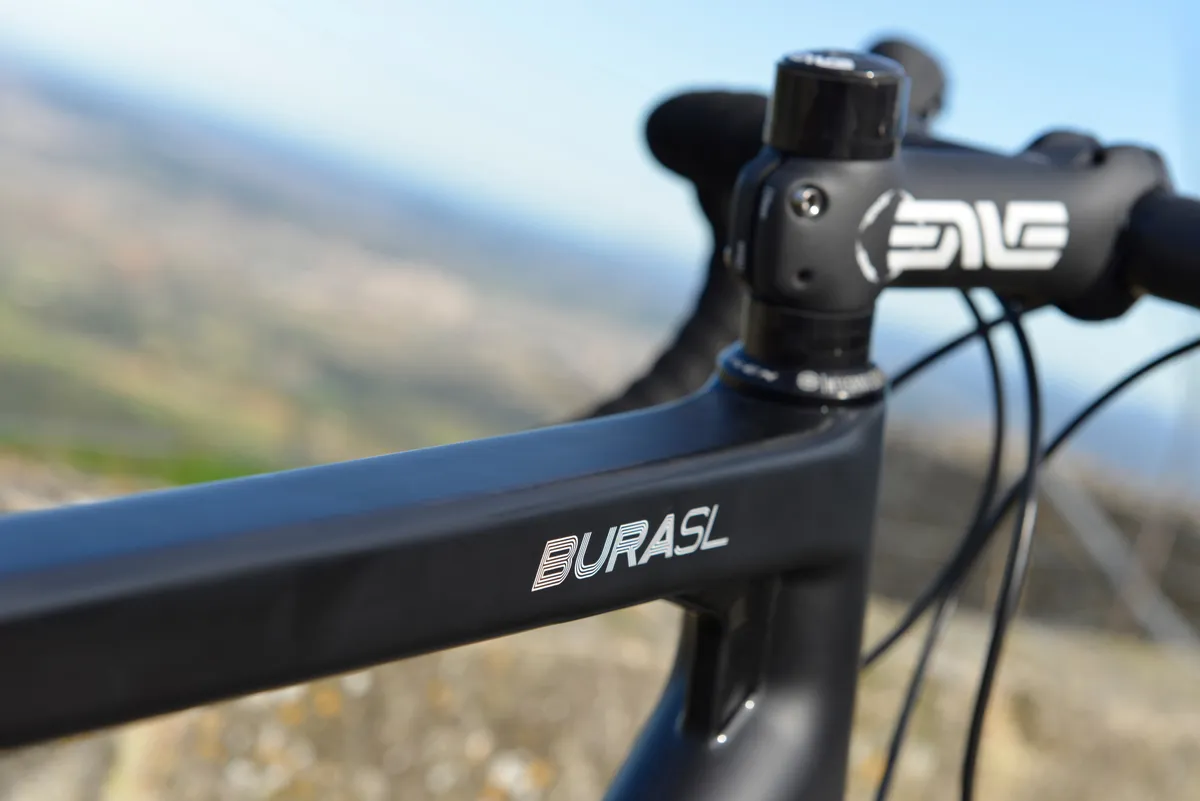
Two distinct triangle shapes define the road bike and each tube has a name. Firstly, there is the head tube at the front of the bike where the forks are fitted. Forks are the prong-like part of your frame that holds the front wheel in place and is fitted through the head tube. Your frame and forks together are known as the frameset.
Next is the top tube, which runs from the front of the bike to the seat post clamp (the seat tube where the seat post is fitted), and the down tube, which runs from the forks to the bottom bracket. These are the tubes making up the front triangle.
The seat post fits into the seat tube and allows the rider to quickly and easily adjust their saddle height. A clamp, which is typically wrapped around the end of the seat tube, holds the seat post in place once fitted.
The rear triangle is made up of the seat stays and the chain stays. These names are derived by the parts they connect the rear wheel to. The seat stays run from the top of the seat post to the rear hub. The chain stays run from the bottom bracket to the rear hub, in-line with the chain.
This rear triangle often dictates comfort versus racing, as a more relaxed build would allow more flex in this area as opposed to the super stiff set-up on a racing bike.
Bottom bracket
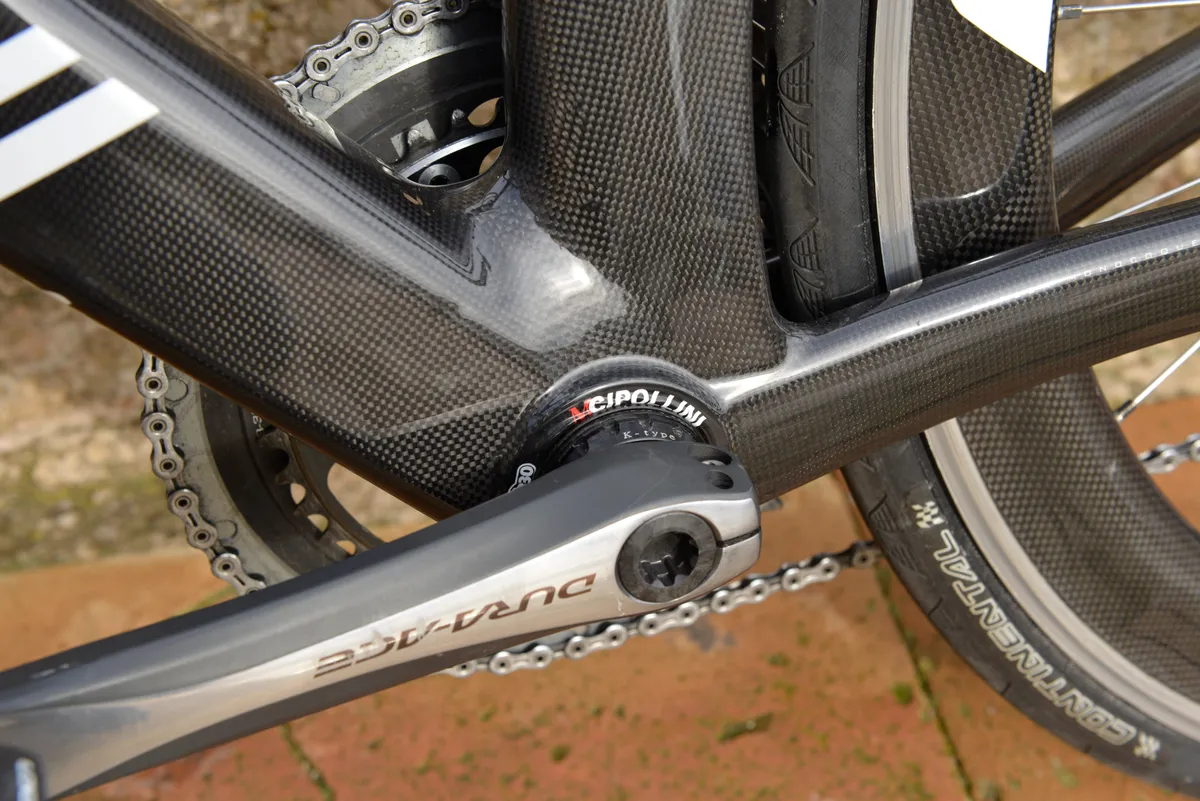
The bottom bracket and headset are the two points on the frame where you will find bearings. The bottom bracket is where the part known as the crankset will be fitted. This is the component that your pedals are fitted to and that drives the chain.
Metal guides known as cups hold the bearings in place. These are fitted into the frame here to allow the crankset to move freely. The headset works in a very similar manner to the bottom bracket. Cups with bearings in place are fitted into the head tube and will hold the forks in place and allow them to move freely
Wheels
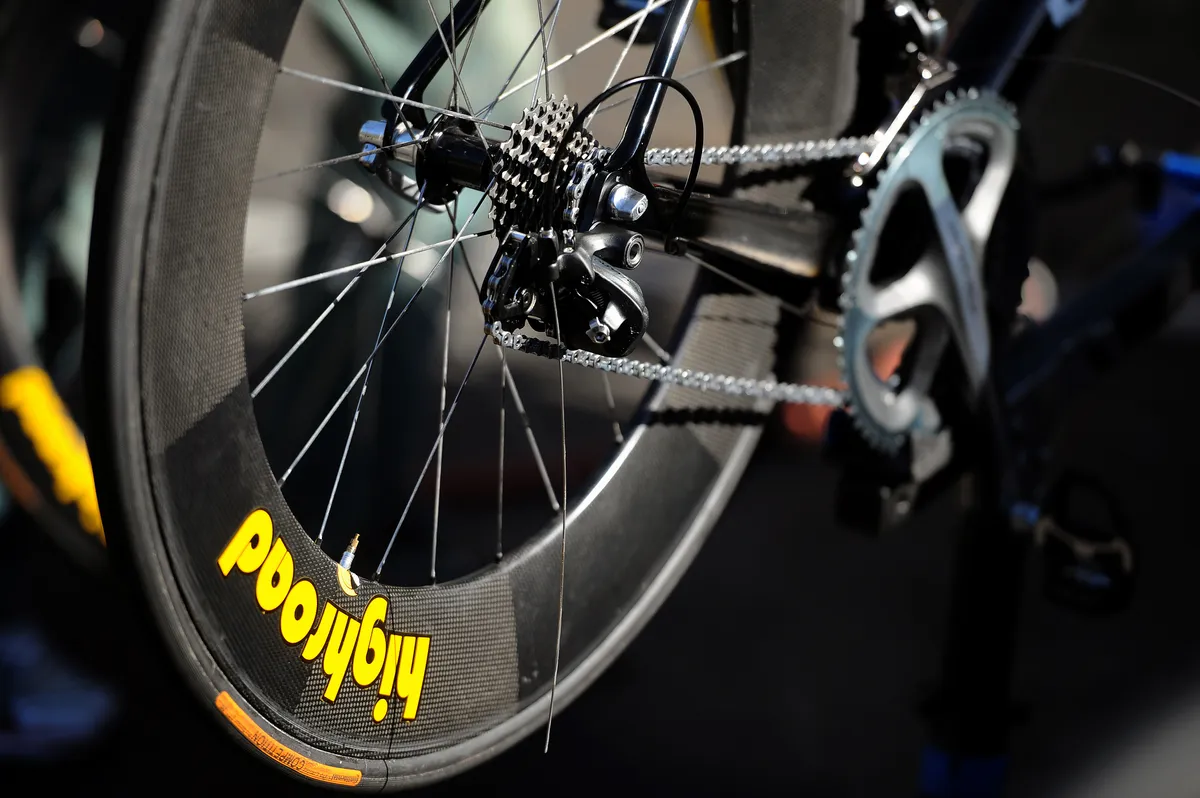
Wheels are often the first components a rider will upgrade when purchasing a new bike. Rotational weight makes a huge difference when accelerating, while 'deep section' wheels (meaning wheels with deep rims) offer the aerodynamic benefits. Cheaper ‘box section’ wheels with shallow rims, more spokes in the wheel and a heavier weight penalty are often used through winter months by riders who would prefer to save their expensive wheels for the warmer weather.
- Which race wheel type is best for me?
- 8 of the best bike race wheels under £2,000
- Mountain biking: do bigger wheels make you faster?
Road bikes typically use narrow rims of around a 17mm internal width, with all but the smallest riders using wheels with a 700c diameter. Spokes are fitted with nipples, which are easily twistable bolts that attach them to the rim of the wheel to tension them correctly. Spokes are laced to hubs that feature a freewheel, which will be specific to a particular ‘groupset’ such as Shimano.
A hub is the component at the centre of your wheel. These have bearings inside them to allow them to spin freely. The spokes are not being pressed into the hub, but rather the hub acts as an anchor for the spokes to apply tension between the hub and the rim.
The freewheel is the device in a road bike hub which allows a rider to freewheel. When you pedal, switch-like levers engage into grooves within the freewheel, allowing your power to turn the wheel. When you stop pedalling, these levers will move in the other direction and will be flicking up and down over and into the grooves of the freewheel, which is what causes the familiar clicking noise when you freewheel.
Drivetrain
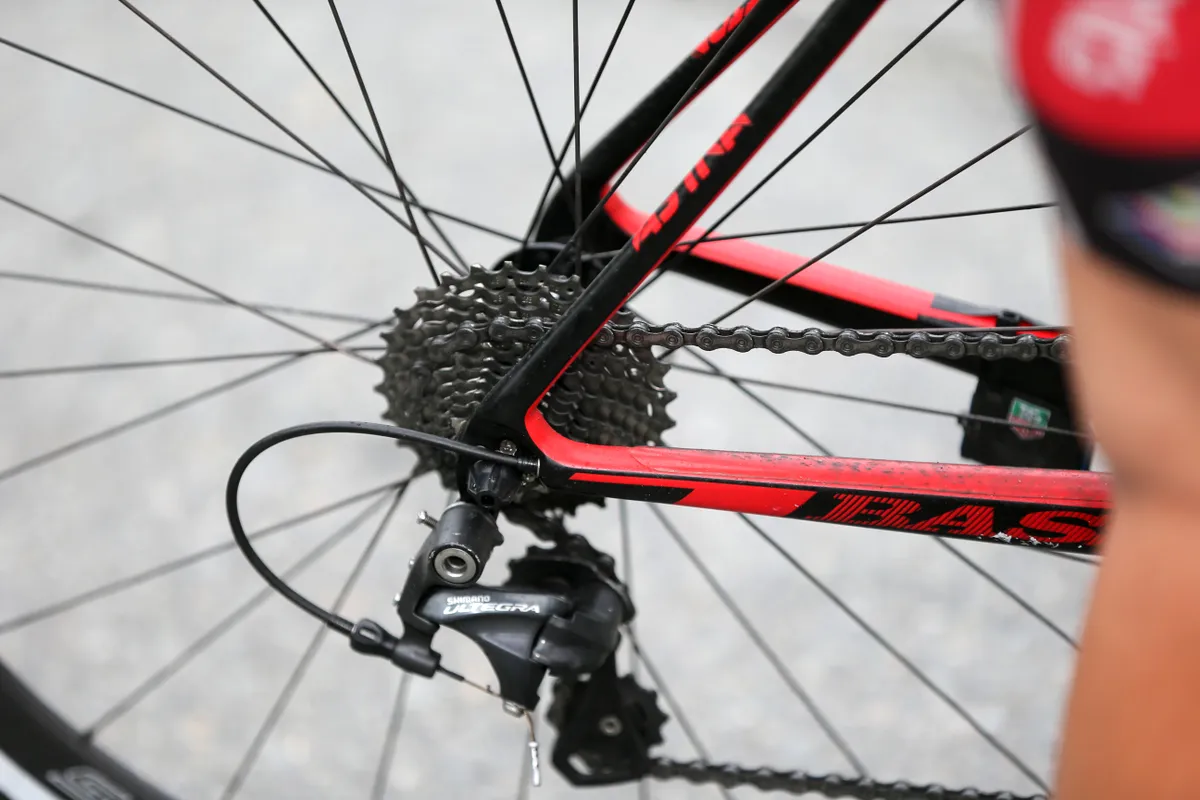
The drivetrain refers to the components that make up your gears. All components related to the brakes and gears together is referred to as the groupset. Your drivetrain includes the chain, the cassette, which is your gears affixed to the rear wheel, and the chainrings, which attach to the crankset.
Providing you have two chainrings at the front of your drivetrain, you will have both a front and a rear derailleur. The front derailleur is responsible for switching between the chainrings attached to your crankset, while the rear derailleur will move you from one gear to the other on the cassette.
Depending on riding style, a rider may choose very different ranges of gears. Almost all road bikes today use two chainrings and a cassette with 11 gears. A third chainring is something hybrids and mountain bikes might be fitted with due to the need to carry heavier loads up steep inclines.
A racer would likely choose chainrings with 53 and 39 teeth respectively and a cassette ranging from 11-28 teeth per sprocket. This setup will give them a high gear which is perfect for fast sprints and long descents, as well as a low gear small enough to make it up all but the most gruelling of inclines.
- What are the advantages of a triple crankset with a standard cassette?
- Cassette and chainring combination: how to choose the right set-up
An endurance rider would likely favour chainrings with 50 and 34 teeth and a cassette from 11-32 or even larger if they plan to go touring with added weight on their bike. This added range will be very useful for potential off-road sections they may encounter, as well as maintaining a good cadence up steep inclines with weight on their bike. The most common setup is the middle ground of the two with 52 and 36 teeth chainrings and the standard 11-28 cassette at the rear.
Components
The remaining parts of a road bike, such as the seat post, saddle, handlebars and stem, are collectively referred to as ‘finishing kit’ or simply as your ‘components’. The handlebars and stem are sometimes referred to as the ‘cockpit’.
Stem and handlebars
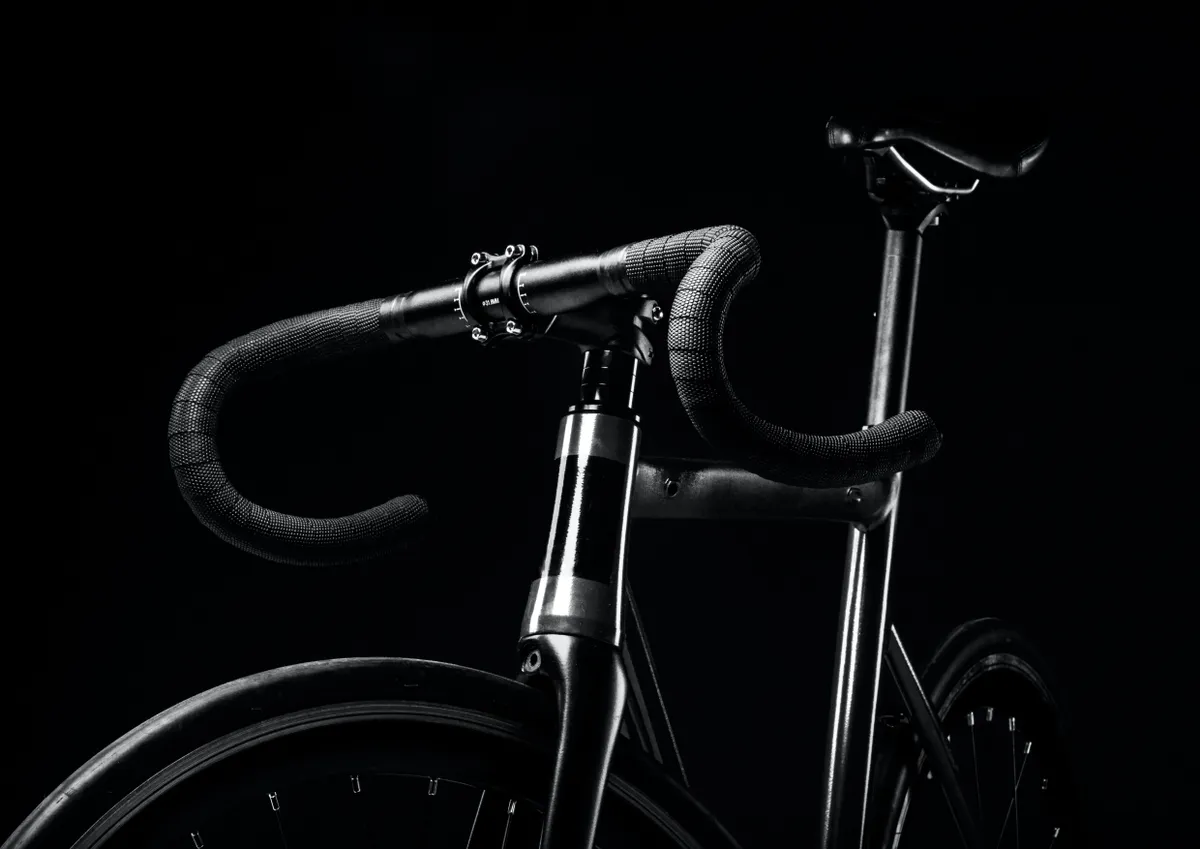
Your stem attaches to the forks of the bike and will sit atop the headset with spacers fitted if necessary to raise the handlebars. Longer stems will give the bike a more aggressive position, as well as making the steering less twitchy for higher speeds. Handlebars are almost exclusively drop bars on road bikes, which are bars that curl down and under the handlebar, giving the rider three options to rest their hands.
Most of the time, riders will hold their shifters or the hoods, which are your brake and gear levers. When climbing, some riders choose to rest on the tops, which are the flat section of handlebar, closest to the stem. When descending, it is wise to ride in the drops for a lower centre of gravity and better leverage on your brakes. Drop handlebars will be wrapped in bar tape for additional comfort and grip.
London based bike repair company, havebike offers riders across the South East collect and return repairs and servicing. To book your bike in for a repair or service, visit www.havebike.co.uk
